In the age of environmental awareness, every consumer choice counts, and cosmetics are no exception. The beauty industry generates 120 billion pieces of packaging annually—most of it non-recyclable—that end up in oceans and landfills. But there’s good news: your beauty routine can be a game-changer. These data reveal how eco-friendly cosmetics are redefining personal care.
The Hidden Impact of Conventional Cosmetics
1. Microplastic Pollution
- One in three products contains plastic microbeads (e.g., exfoliants, liquid foundations).
- Every year, 8,000 tons of cosmetic microplastics end up in the ocean.
- Eco-friendly alternative: Scrubs with apricot seeds or sea salt.
2. Ingredient Toxicity
- 65% of what you apply to your skin is absorbed into the bloodstream.
- Blacklist of ingredients:
- Parabens: Hormone disruptors (banned in the EU since 2022).
- Phthalates: Linked to fertility problems.
- PFAs: “Forever chemicals” in long-lasting lipsticks.
3. Huge Water Footprint
- 15,000 liters of water are required to produce 1 kg of palm oil (present in 70% of lipsticks).
- Circular Solutions: Brands like Lush use 0.01% of the water used in traditional industries.
How Organic Cosmetics Are Changing the Rules
1. Ingredients that Regenerate
- Biomimicry: Plants that survive in extreme climates (e.g., Desert Rose for deep hydration).
- Regenerative Agriculture: Crops that sequester carbon (Dr. Hauschka project in Germany).
2. Second-Life Packaging
- Tinted glass: Protects active ingredients + is infinitely recyclable.
- Reward programs: Kjaer Weis returns 20% of the price when recycling the packaging.
3. Fair Supply Chain
- Direct Trade: 150,000 farming families receive 3x more income from organic crops.
- Ethical certifications: Fair for Life, Cruelty-Free International.
Lipstick as a Symbol of Revolution
Surprising Facts:
- Conventional lipstick = 300 ingredients from 20 countries (transport footprint: 0.5 kg CO₂ per unit).
- Eco-friendly lipstick = 15 local ingredients + compostable packaging.
Brands That Make a Difference:
- Axiology: 10 ingredients maximum, recycled cardboard packaging.
- Zao Makeup: Bamboo refills that reduce waste by 90%.

The Power of Your Choice: 3 Concrete Changes
1. Multiplier Effect
- 1 consumer who chooses organic = 34 kg less waste/year.
- Growing trend: The eco-friendly cosmetics market is worth USD 25 billion by 2025.
2. Pressure on Big Brands
- L’Oréal eliminated microplastics from its entire line by 2024.
- Estée Lauder launched its first biodegradable serum in 2025.
3. Preventive Health
- 60% reduction in dermatitis from organic cosmetics (University of Barcelona study).
How to Identify a Truly Organic Cosmetic
Labels that Matter:
- COSMOS Organic: 95% natural ingredients.
- EWG Verified: Zero controversial ingredients.
- Leaping Bunny: 100% cruelty-free testing.
Key Ingredients:
- Carrier oils: Argan, jojoba, rosehip.
- Mineral pigments: Iron oxides, ethical synthetic mica.
The Future: Innovations to Come
- “Living” lipsticks: With probiotics that improve the lipid barrier.
- Waterless beauty: Powder products that are activated with water at home.
- Transparency blockchain: Scan the QR code and see the product’s entire journey.
“Your cosmetics cart is a vote for the world you want to inhabit.” — Anita Roddick, founder of The Body Shop.



